- Door Delivery
- Size customizable
- Gsm customizable
- 3.9★
- Door Delivery
- Size Customizable
- Gsm 60-80
- 3.5★
- Door Delivery
- Size customizable
- Gsm 30 to 70
- 3.7★
- Door Delivery
- Size Customizable
- Gsm 30 – 120
- 4.9★
When it comes to wound care supplies, choosing the right dressing is crucial for proper healing and preventing complications. Two of the most common options available are non woven dressing and woven gauze. While they might look similar at first glance, their construction, properties, and ideal uses differ significantly. Most importantly, understanding these distinctions helps you make informed decisions for effective wound management.
At Favourite Fab, we specialize in high-quality medical textiles and wound care supplies. Because we believe in empowering our customers with knowledge, we’ve put together this comprehensive guide. Therefore, you can confidently select the best dressing for any situation, from minor cuts to post-operative care.

Get Free Sample Kit Of Our Fabric At Your Door Step
- Online Order
- Door Delivery
- 1-Click Quotation
What is a Non Woven Dressing? Understanding the Basics
What is a non-woven wound dressing?
A non woven dressing (also known as nonwoven dressings or non-woven sponges) is a type of medical dressing made from fibers that are bonded together through mechanical, thermal, or chemical processes, rather not by weaving. This means the fibers are laid out in a web and then joined, giving the material a more uniform and smooth texture compared to traditional woven fabrics.
What are non woven dressings made of?
Typically, non woven dressing materials are a rayon/polyester blend dressing. This blend offers a combination of softness, strength, and absorbency. They are often characterized by being lint-free dressing, which is a significant advantage in wound care as it prevents fibers from shedding into the wound bed.
What is a non-woven combine dressing used for?
A non-woven combine dressing usually consists of a highly absorbent thick layer (often fleece) enclosed in a soft and conformable non woven fabric. These are commonly used for packing large bleeding wounds after initial bleeding control or as a primary or secondary dressing for medium to heavy exuding wounds. They are designed for significant absorption and protection.
Woven Gauze: The Traditional Choice
In contrast, woven gauze is crafted by interweaving threads (typically cotton yarn) in a crisscross pattern, creating a more open and traditional fabric structure. This is essentially what sterile gauze pads are. Woven gauze has been a staple in first aid supplies for centuries due to its accessibility and versatility.
Non Woven Dressing vs. Woven Gauze: The Key Differences
The primary distinction lies in their manufacturing process, which, consequently, dictates their properties and best applications.
What is the difference between woven and non-woven?
- Woven Fabric: Made by interlacing two separate sets of yarns or threads at right angles. Think of a basket weave.
- Non-Woven Fabric: Made by bonding or felting fibers together. There’s no distinct pattern of interlacing threads.
This fundamental difference leads to several practical distinctions in wound care:
- Linting:
- Woven Gauze: Prone to linting (shedding small fibers) when cut or manipulated. These loose fibers can potentially stick to the wound bed, interfering with the healing process or becoming a source of irritation.
- Non Woven Dressing: Generally lint-free dressing, making them a cleaner option for wound care, especially for delicate wounds or surgical sites. This is why many prefer sterile non woven dressing 4×4 for cleanliness.
- Absorbency:
- Woven Gauze: Can be absorbent, but its open weave might allow fluids to spread laterally more easily before full absorption.
- Non Woven Dressing: Often designed for higher absorbency and wicking capacity due to their denser, more uniform structure. They absorb fluids vertically, away from the wound. Are non woven dressings absorbent? Yes, many are highly absorbent, especially multi-ply versions like a 4-ply non woven dressing.
- Adherence to Wound Bed:
- Woven Gauze: Can adhere to the wound bed, especially as exudate dries. This can cause pain and trauma during removal, potentially disrupting newly formed tissue.
- Non Woven Dressing: Tend to have lower adherence to the wound bed, leading to less painful and less traumatic dressing changes. This is particularly true for non-adherent non woven dressing types.
- Strength and Durability:
- Woven Gauze: Can fray when cut and may not hold up as well under tension.
- Non Woven Dressing: Generally stronger, bulkier, and more durable, resisting tearing and fraying.
- Softness and Conformability:
- Woven Gauze: Can feel coarser due to the weave structure.
- Non Woven Dressing: Often softer and more conformable, allowing them to gently contour to body shapes, which is excellent for non woven dressing for sensitive skin and post-operative non woven dressing.
- Cost:
- Woven Gauze: Typically more economical per unit.
- Non Woven Dressing: Generally more expensive, but the benefits in terms of patient comfort, reduced complications, and less frequent changes can offset the cost.
When to Choose Non Woven Dressing: Ideal Applications
What is a non woven dressing used for?
A non woven dressing is an excellent choice for a variety of wound management needs, especially when you prioritize low linting, absorbency, and gentle removal. Here are some common applications:
- Post-operative Wounds: Their lint-free nature and softness make them ideal for covering surgical incisions to prevent contamination and irritation. Many prefer post-operative non woven dressing due to its gentle nature.
- Minor Cuts and Abrasions: They provide good absorption for light to moderate exudate and protect the wound.
- Sensitive Skin: The soft texture and often hypoallergenic adhesives (in adhesive versions) make them suitable for individuals with delicate or easily irritated skin. This is key for non woven dressing for sensitive skin.
- Cleaning Wounds: Non-woven sponges are frequently used for non woven dressing for cleaning wounds because they are lint-free and highly absorbent, effectively picking up debris and exudate without leaving fibers behind.
- As a Secondary Dressing: They can effectively cover and secure primary dressings, providing additional absorbency and protection.
- Where precise wound care is needed: Because they don’t shed lint, they are safer for more intricate wound applications.
When to Choose Woven Gauze: Practical Uses
What is non-woven gauze used for?
While non woven dressing has many advantages, woven gauze still holds its place in certain wound care scenarios:
- Heavy Bleeding: Its bulk and traditional construction can be effective for applying direct pressure to control significant bleeding.
- Packing Wounds: While non-woven can also pack wounds, woven gauze is often a more economical choice for large cavity wounds that require frequent packing changes. However, care must be taken to ensure no fibers are left behind.
- General Cleaning & Prepping: For non-sterile cleaning of intact skin or surfaces, traditional gauze remains a viable and cost-effective option.
- Applying Pressure: Its ability to be folded into thick pads makes it suitable for compression.
How to Apply a Non Woven Wound Dressing
How to apply a non woven wound dressing?
Applying a non woven wound dressing is straightforward, but proper technique ensures optimal healing:
- Hand Hygiene: Always wash your hands thoroughly with soap and water or use an alcohol-based hand sanitizer.
- Clean the Wound: Gently cleanse the wound with a suitable wound cleanser or saline solution. Use a clean non-woven sponge for this step. Pat the surrounding skin dry.
- Choose the Right Dressing: Select a sterile non woven dressing 4×4 or appropriate size that extends at least an inch beyond the wound edges. If using a non woven island dressing with adhesive border, ensure the pad covers the wound completely.
- Apply Primary Layer (if needed): If the wound is very moist or sensitive, a non-adherent non woven dressing or a thin layer of petroleum jelly gauze might be placed directly on the wound first.
- Place the Non Woven Dressing: Carefully place the non woven dressing pad over the wound. Avoid touching the sterile pad itself.
- Secure the Dressing:
- If it’s a non woven island dressing with adhesive border, simply press the adhesive border firmly to the surrounding skin.
- If it’s a non-adhesive non woven dressing, secure it with medical tape, a bandage wrap, or an adhesive film dressing.
- Change Frequency: Follow your healthcare professional’s advice on how often to change the dressing. Generally, change it when saturated with exudate or if the adhesive border starts to lift.
Can you cut non woven dressings?
Yes, you can often cut non woven dressings to size, especially if they are non-adhesive. However, if it’s an adhesive type, cutting it might compromise the sterile barrier or the adhesive seal. Always use clean, sharp scissors to prevent fraying. For optimal integrity, pre-sized options are generally preferred.
Related Dressings & What Non Woven Dressing Meaning Entails
The term “non woven dressing meaning” refers to the entire category of wound dressings fabricated using bonded fibers rather than traditional weaving. This broad category includes various specialized products:
- Non Woven Adhesive Wound Dressing / Non Woven Adhesive Dressing with Pad: These feature an absorbent non-woven pad with an adhesive border, offering an all-in-one solution for wound coverage and securement. They are convenient for post-operative non woven dressing.
- Non Adherent Dressing: These dressings, whether woven (like Telfa pads) or non-woven, have a special surface that prevents them from sticking to the wound bed. This makes removal pain-free and avoids disturbing delicate healing tissue. Non adherent dressing used for wounds where adherence is a concern, such as burns, skin grafts, or heavily exuding wounds. Non Adherent Dressing examples include Telfa pads and various film or silicone-coated dressings.
- Non Adhesive Dressing: This simply means the dressing does not have an adhesive backing and requires tape or another method to secure it. The difference between adhesive and non adhesive dressing is purely about the method of attachment. Non-adhesive options offer more flexibility in securing the dressing, especially for sensitive skin or areas where adhesive might cause irritation.
While non woven dressing vs Mepore or Telfa pads vs non woven dressing are specific comparisons, they highlight the diverse range within wound care. Mepore (often a non-woven island dressing) and Telfa (a non-adherent pad) each have their unique characteristics suited for different wound types, even though they might both incorporate non-woven technology.
Favourite Fab: Your Partner for Comprehensive Wound Care
At Favourite Fab, we are committed to providing a wide range of wound care supplies, including top-tier non woven dressing solutions. We ensure our products, from sterile gauze pads to bulk non woven dressings, meet the highest quality standards, providing optimal performance for healthcare professionals and individuals alike. Our efficiency in manufacturing and distribution means you get reliable medical dressing when you need them.
Whether you are looking for wholesale non woven dressing for your hospital, non-woven sponges for your clinic, or specialized absorbent dressing for specific wound types, Favourite Fab is your trusted partner. We pride ourselves on our experience, expertise, and dedication to trustworthiness in the medical supplies industry.

Get Free Sample Kit Of Our Fabric At Your Door Step
- Online Order
- Door Delivery
- 1-Click Quotation
Frequently Asked Questions (FAQ)
What is a non-woven wound dressing?
A non-woven wound dressing is a type of medical dressing made from fibers (typically a rayon/polyester blend) that are bonded together, rather than woven. This construction results in a soft, lint-free, and often highly absorbent material used for various wound care applications.
What is a non-woven combine dressing used for?
A non-woven combine dressing is a highly absorbent pad, usually made of a thick fleece core encased in a non-woven fabric. It’s used for managing wounds with moderate to heavy exudate, packing large bleeding wounds, or as a primary or secondary dressing where significant absorption and protection are required.
What is non-woven gauze used for?
Non-woven gauze, or non-woven sponges, is primarily used for wound cleaning, applying pressure, absorbing exudate, and as a primary or secondary dressing. Its lint-free nature makes it superior to traditional woven gauze for applications where fiber shedding could be detrimental to healing.
What is the difference between woven and non-woven?
The key difference lies in their manufacturing. Woven materials are made by interlacing threads (like fabric), while non-woven materials are made by bonding or tangling fibers together. This results in non-woven products being generally softer, less linting, more absorbent, and often more conformable than their woven counterparts.
Contact Us
Ready to upgrade your wound care supplies with superior non woven dressing solutions? Contact Favourite Fab today to learn more about our products, discuss bulk orders, or explore customized solutions.
Email: sale@favouritehub.com WhatsApp: 9528811566
Partner with Favourite Fab for innovative and reliable wound management products that prioritize healing and comfort.








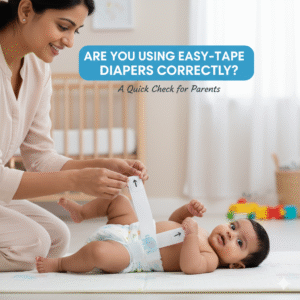
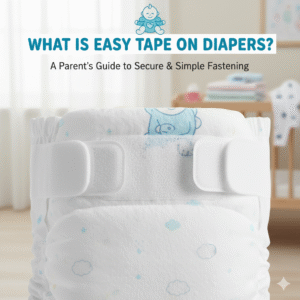
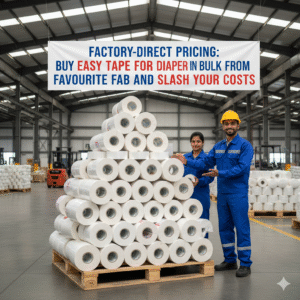

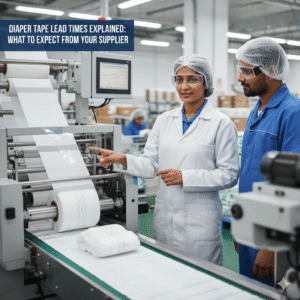
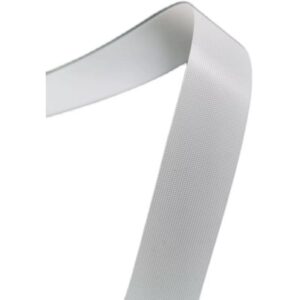
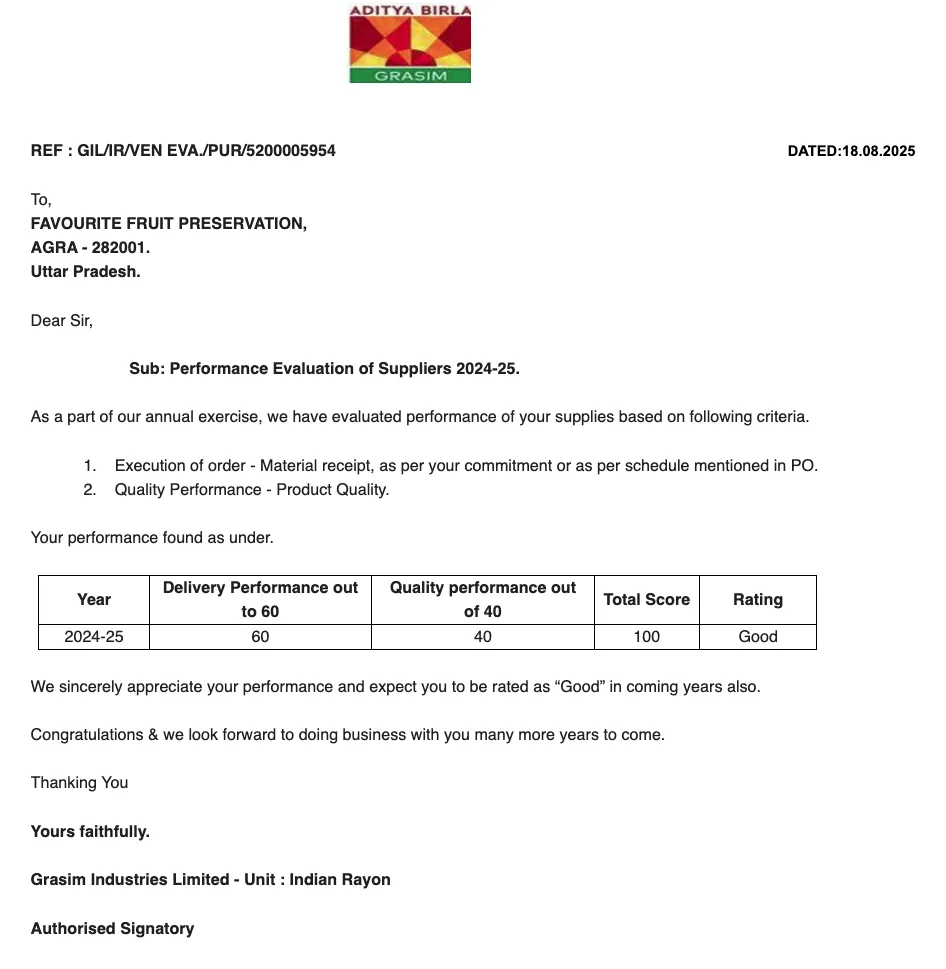




























We Do Business On Trust.Our Nonwoven fabric Business is Built on trust. Trust starts with Transparency.
Mr.Ramniwas Garg Founder Of Favourite Group